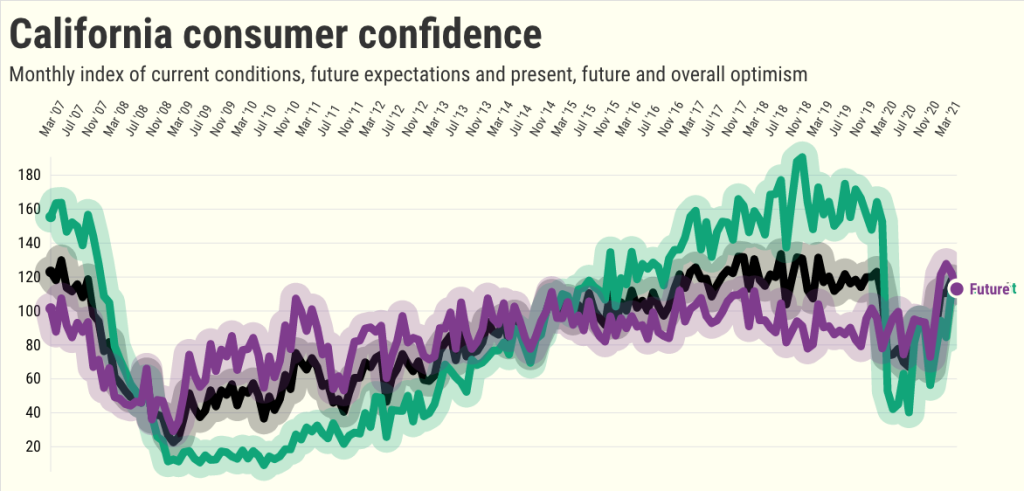Nine out of every 10 Silicon Valley jobs pays less now than when Netflix first launched in 1997, despite one of the nation’s strongest economic booms and a historically low unemployment rate that outpaces the national average.
While tech workers have thrived, employees in the middle of Silicon Valley’s income ladder have been hit hardest as their inflation-adjusted wages declined between 12 and 14 percent over the past 20 years, according to a study from UC Santa Cruz’s Everett Program for Technology and Social Change and the labor think tank Working Partnership USA, which examined the economic impact of technology companies.
 Technology workers saw a median wage increase of 32 percent over the past 20 years, the study found. But Silicon Valley workers in virtually all other areas lost ground during that time. Across all jobs, wages for even the highest-paid 10 percent increased just under 1 percent, the study found.
Technology workers saw a median wage increase of 32 percent over the past 20 years, the study found. But Silicon Valley workers in virtually all other areas lost ground during that time. Across all jobs, wages for even the highest-paid 10 percent increased just under 1 percent, the study found.
Meanwhile, the region’s economy has been booming. Since 2001, the amount of money generated per Silicon Valley resident — the area’s per person GDP — has grown 74 percent, the study found. That’s more than five times faster than the equivalent national growth.
But a smaller share of that wealth is going to workers, according to the study, which was released last month. In 2001, about 64 percent of the money generated in Silicon Valley went to workers. By 2016, that was down to 60 percent. The drop translated to $9.6 billion — about $8,480 in potential pay and benefits per worker — that instead went to investors and owners, according to the study.
“It’s incredible the kind of revenues or wealth that’s generated in this area, and yet it doesn’t work as an economic model for a large majority of the population,” said Chris Benner, a UC Santa Cruz professor who led the study. “It’s not just a few people being left behind.”
Benner said big technology companies like Google and Facebook are so dominant in their respective markets that they have been able to direct a larger share of revenues to investors and some top employees.
At the same time, the region’s increasing cost of living is leading to some of the highest poverty rates in the country, he said. Adjusted for living costs, California has the second-highest poverty rate in the U.S., according to the U.S. Census Bureau.
Russell Hancock, president and CEO of Join Venture Silicon Valley, said that workers in low and middle income jobs, such as teachers and firefighters or nannies and cooks, are key to the local economy.
“The economy doesn’t work on data scientists alone,” he said.
But those low and middle income workers are having a harder and harder time living in Silicon Valley. In San Jose, a low-income renter would have to spend his entire income to afford a typical apartment. That’s according to a study from Zillow, which found San Jose is now the most unaffordable market to buy a home in the country.
Surprisingly, the UC Santa Cruz study suggests that employment in low wage industries is growing. The share of worker in jobs considered low-wage in 1997 grew 25 percent over the next 20 years, while the percent working in middle- and high-wage jobs declined.
“Rather than an hourglass economy, I tend to think of it as a pear economy, where you’re sort of seeing this shrinking at the top and sort of bulging out at bottom,” Benner said.
Notably, the lowest-paying 10 percent of jobs also saw the smallest wage decline among workers — a less than 1 percent drop between 1997 and 2017. Benner attributed that to minimum wage laws that have raised the income floor for some workers.
“Policy makes a difference,” he said.
San Jose, Palo Alto and Cupertino all have minimum wages higher than California’s $10.50 an hour. Starting this year, Sunnyvale and Mountain View’s minimum wages increased to $15, which will become the statewide requirement in 2023.
Still, that hasn’t benefited those workers in middle-income jobs that have seen the biggest declines. Hancock worries that creating such a “bifurcated society” might impact the quality of life in the region.
“Do we want to be a community where our firefighters and teachers aren’t living with us, they’re living separate, in far off communities?” he said.









